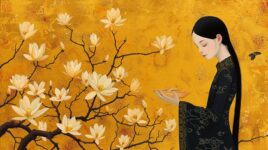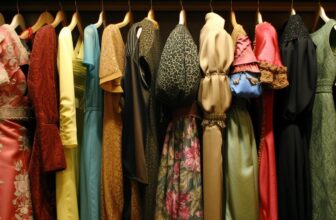
Nguyen Dan Celebration of Spring
The Nguyen Dan celebration of spring, also known as Tet Nguyen Dan, is one of the most important and cherished festivals in Vietnamese culture. It marks the beginning of the lunar new year and is a time for families to come together, honor their ancestors, and look forward to a prosperous year ahead.
This traditional festival holds deep cultural and historical significance, reflecting the values and beliefs of the Vietnamese people. With a history dating back thousands of years, Nguyen Dan is deeply rooted in tradition and customs that have been passed down through generations.
During this joyous occasion, colorful decorations adorn homes and streets, special dishes are prepared, and various rituals are performed to bring luck and prosperity. The festival also encompasses a wide range of activities, events, and performances that showcase the rich cultural heritage of Vietnam.
As we delve into this article, we will explore the origins and traditional roots of Nguyen Dan, delve into its customs and traditions, highlight the special dishes enjoyed during the celebration, discuss symbolic decorations and imagery used to decorate for Nguyen Dan, showcase various events and activities that take place during the festival, emphasize the importance of family and community in its observance.
Join us on a journey through this vibrant celebration as we uncover its regional variations, modern observance in contemporary times, and reflect on its spiritual and cultural significance in Vietnamese society. Get ready to immerse yourself in the beauty and richness of Tet Nguyen Dan – the Vietnamese Celebration of Spring.
History of Nguyen Dan
The Nguyen Dan celebration of spring, also known as Tet, is a significant festival in Vietnamese culture. It marks the arrival of spring and is a time for family reunions and paying respects to ancestors. As one of the most important holidays in Vietnam, it is essential to understand the history and traditional roots of this festival.
The origins of Nguyen Dan can be traced back thousands of years to the agricultural society of ancient Vietnam. The festival was originally based on the lunar calendar and was a time for farmers to celebrate the arrival of spring and pray for a prosperous harvest. Over time, Nguyen Dan has evolved, incorporating elements from Chinese traditions and other cultural influences.
One of the traditional customs associated with Nguyen Dan is the practice of cleaning and decorating homes in preparation for the new year. Families believe that this ritual will sweep away bad luck and make way for good fortune in the coming year. Additionally, ancestral altars are meticulously prepared with offerings such as fruit, flowers, and burnt incense as an expression of gratitude to deceased relatives.
Another significant aspect of Nguyen Dan is the role of food and feasting in the celebrations. Special dishes such as banh chung (sticky rice cake), thit kho trung (caramelized pork with boiled eggs), and pickled vegetables are prepared and enjoyed during this time. These foods hold symbolic meaning and are thought to bring luck and prosperity to those who consume them.
As part of the historical traditions associated with Nguyen Dan, various performances take place throughout Vietnam during this festive period. Lion dances, firecrackers, music performances, and dragon dances are among the many activities that bring communities together to celebrate the holiday.
In modern times, although there have been changes in how Nguyen Dan is celebrated due to urbanization and globalization, efforts have been made to preserve traditional customs while simultaneously incorporating contemporary elements into the festivities.
Overall, understanding the history and traditional roots of Nguyen Dan provides insight into the rich cultural heritage behind this vibrant celebration. This knowledge helps to deepen our appreciation for its significance in Vietnamese society today.
Customs and Traditions
Nguyen Dan, also known as Tet, is the Vietnamese celebration of spring and the most important festival in Vietnamese culture. It marks the arrival of spring based on the Vietnamese calendar and is a time for family reunions, paying respect to ancestors, and looking forward to prosperity in the new year. The customs and traditions associated with Nguyen Dan are deeply rooted in Vietnamese culture and have been passed down through generations.
One of the most important rituals during Nguyen Dan is the act of offering incense to ancestors at the family altar. This is a way for families to pay their respects and seek blessings for the upcoming year. Another common practice is visiting pagodas and temples to pray for good fortune. Many people also participate in the custom of releasing live carp into ponds or rivers as a symbol of good luck and prosperity.
During Nguyen Dan, many families clean their homes thoroughly as a way to sweep away any bad luck from the previous year and make room for good luck in the new year. Houses are adorned with colorful decorations such as blooming peach blossoms, kumquat trees, and various flowers symbolizing wealth, good fortune, and new beginnings.
The act of giving lucky money to children during Nguyen Dan is another cherished tradition. Red envelopes containing money are given to children as a way to bestow prosperity upon them in the coming year. Additionally, special dishes such as banh chung (sticky rice cake) and gio lua (Vietnamese pork sausage) are prepared during this time for feasting with loved ones.
Throughout Vietnam, there are various traditional performances and activities that take place during Nguyen Dan such as dragon dances, drum performances, and folk games. These cultural events bring communities together in celebration of the new year. Overall, customs and traditions associated with Nguyen Dan highlight the values of gratitude, respect for elders, unity within families, and hope for a prosperous future.
| Customs & Traditions | Data |
|---|---|
| Rituals | Offering incense to ancestors; Visiting temples; Releasing live carp |
| Decorations | Peach blossoms, kumquat trees; Flowers symbolizing wealth & good fortune |
| Activities | Dragon dances; Drum performances; Folk games |
Food and Feasting
Nguyen Dan, also known as the Vietnamese Celebration of Spring, is a time of joy and abundance for the Vietnamese people. A significant aspect of this festive occasion is the indulgence in a wide array of special dishes and culinary delights that are enjoyed during the celebration. Traditional cuisine plays a pivotal role in the observance of Nguyen Dan, with families gathering to partake in delectable feasts that symbolize prosperity, good fortune, and unity.
During Nguyen Dan, a variety of traditional dishes are prepared with meticulous care and attention to detail. These dishes are not only flavorful but also hold deep cultural and symbolic significance. Some of the most popular dishes enjoyed during the celebration include:
- Banh Chung: This square-shaped sticky rice cake filled with mung beans and pork is an iconic dish closely associated with Nguyen Dan. The process of making Banh Chung is considered a communal activity, bringing together family members to participate in its preparation.
- Dried fruits and seeds: Assorted dried fruits such as candied coconut strips, lotus seeds, watermelon seeds, and kumquat preserves are commonly served during Nguyen Dan. These sweet treats symbolize wishes for a sweet and fruitful year ahead.
- Pickled vegetables: A colorful array of pickled vegetables such as carrots, daikon radish, and cabbage are often served as accompaniments to main dishes. These tangy side dishes add brightness and contrast to the rich flavors of other festive foods.
- Spring rolls: Freshly made spring rolls filled with shrimp, pork, vermicelli noodles, and herbs are a beloved appetizer during Nguyen Dan. Their cylindrical shape represents wealth and prosperity in the coming year.
- Sticky rice cakes (Banh Tet): Similar to Banh Chung, Banh Tet is another type of sticky rice cake that varies in shape depending on the region in Vietnam. It is typically filled with savory ingredients such as mung bean paste or pork belly.
In addition to these specific traditional dishes, families often prepare lavish spreads that include an assortment of meats, seafood, vegetable dishes, soups, and desserts. The act of preparing and sharing these meals holds great significance as it fosters bonding among family members while honoring age-old culinary traditions passed down through generations.
Decorations and Symbols
Nguyen Dan, the Vietnamese Celebration of Spring, is a vibrant and colorful festival that is steeped in tradition and symbolism. One of the most visually striking aspects of this celebration is the use of decorations and symbols to mark the arrival of the new year. From intricate floral arrangements to traditional artifacts, these adornments serve as an important part of the observance of Nguyen Dan.
One of the most iconic symbols associated with Nguyen Dan is the image of the blooming apricot or peach blossoms. These delicate flowers are believed to bring good luck and prosperity for the coming year, and they are prominently featured in homes and public spaces during the festival. In addition to blossoms, vibrant red banners and paper lanterns are used to create a festive atmosphere, symbolizing joy, luck, and happiness.
Moreover, several traditional artifacts are also used as decorations during Nguyen Dan. These may include items like bamboo branches (which symbolize resilience and flexibility), kumquat trees (representing fertility and abundance), and small altars adorned with offerings for ancestral spirits. Each of these items carries deep cultural significance and reflects the values and beliefs held by Vietnamese people.
In addition to these tangible decorations, symbolic imagery also plays a significant role in marking Nguyen Dan. The image of the zodiac animal for each particular year can be found in various forms throughout homes and public spaces during this time. This not only adds to the festive aesthetic but also serves as a reminder of tradition and heritage.
The use of these decorations and symbols serves not only to beautify homes and public areas but also to imbue them with meaning and cultural significance. From representing hopes for a prosperous year to honoring ancestral connections, each decoration carries a rich layer of symbolism that adds depth to the observance of Nguyen Dan.
| Decorations/Symbols | Meaning |
|---|---|
| Blooming apricot or peach blossoms | Good luck and prosperity |
| Red banners/paper lanterns | Joy, luck, happiness |
| Bamboo branches | Resilience, flexibility |
| Kumquat trees | Fertility, abundance |
Activities and Events
Nguyen Dan, the Vietnamese Celebration of Spring, is a time of joy and festivity marked by a wide array of vibrant events, performances, and activities. This section will delve into the diverse and lively happenings that characterize this auspicious festival.
Parades and Processions
One of the most anticipated activities during Nguyen Dan is the lively parades and processions that wind through the streets of Vietnam. These colorful spectacles feature traditional dragon dances, martial arts displays, and elaborate floats adorned with flowers and symbols of good luck. The rhythmic beating of drums and cymbals fills the air as performers clad in dazzling costumes enchant onlookers with their graceful movements.
Street Fairs and Markets
During Nguyen Dan, bustling street fairs and markets spring up across towns and cities, offering an assortment of goods ranging from festive decorations to delectable treats. Stalls brim with traditional handicrafts, ornate lanterns, symbolic flowers, and lucky charms. Additionally, food vendors tempt festival-goers with an array of tantalizing snacks such as steaming bowls of pho, crispy banh xeo pancakes, sweet coconut desserts, and fragrant teas.
Traditional Games and Performances
The festival provides a platform for the showcasing of traditional Vietnamese games and performances that harken back to centuries-old customs. Spectators gather to watch enthralling water puppet shows that depict scenes from folklore and history or cheer on competitors engaged in thrilling rounds of tugging war or bamboo dancing. These enthralling displays serve as a reminder of Vietnam’s rich cultural heritage.
Cultural Workshops and Demonstrations
Nguyen Dan also sees an array of cultural workshops where visitors can try their hand at crafting intricate folk art or traditional attire like ao dai dresses. Expert artisans offer demonstrations on age-old techniques such as calligraphy writing or flower arranging while imparting knowledge about their historical significance. This hands-on experience allows participants to deepen their appreciation for Vietnamese culture.
Musical Performances and Concerts
The festival is filled with melodious notes as musical performances take center stage at various venues throughout the country. Bands playing traditional instruments fill the air with uplifting melodies while singers regale crowds with timeless songs evoking nostalgia. Concerts featuring contemporary pop acts add a modern twist to the celebrations without losing sight of tradition.
With such a diverse range of activities taking place during Nguyen Dan celebration of spring, it becomes evident why this festival holds such deep cultural significance in Vietnam. From parades to concerts to market fairs, every element reflects the vibrancy and spirit of this cherished holiday.
Family and Community
The Vietnamese celebration of spring, known as Nguyen Dan, holds deep cultural and spiritual significance for the people of Vietnam. One of the fundamental aspects of this festival is the emphasis on family and community, which plays a pivotal role in the observance of Nguyen Dan.
Family Reunions
Nguyen Dan is a time for families to come together and celebrate the beginning of a new year. Families often travel long distances to reunite with their loved ones, as it is believed that starting the new year with family will bring good luck and prosperity. During this time, family members pay respect to their ancestors by visiting their gravesites and making offerings as a gesture of gratitude and remembrance.
Community Gatherings
In addition to family reunions, Nguyen Dan is also a time for communities to come together in celebration. Villages and neighborhoods organize communal activities such as dragon dances, traditional music performances, and street parades. These events not only foster a sense of unity but also serve as an opportunity for people to connect with one another and strengthen their bonds within the community.
Sharing Traditions
During Nguyen Dan, elders pass down traditional customs and rituals to younger generations, ensuring that these time-honored practices continue to be cherished and preserved. By involving children in the preparation of festive decorations and participating in ceremonial activities, families impart important cultural values and teachings that have been passed down for generations.
Support Networks
The spirit of unity during Nguyen Dan extends beyond mere festivities-it also underscores the importance of support networks within families and communities. In times of need, whether it be financial assistance or emotional support, individuals can rely on the strength of their familial and communal ties to weather any storm that may arise.
As integral components of Vietnamese society, family and community serve as cornerstones in the observance of Nguyen Dan-a celebration that emphasizes unity, tradition, and mutual support. This enduring commitment to collective well-being further enhances the cultural significance of this joyous festival.
Regional Variations
Vietnam is a diverse country with various regions, and each region celebrates Nguyen Dan, the Vietnamese celebration of spring, in its unique way. The cultural diversity in Vietnam is reflected in the different customs, traditions, and practices that are observed during this festive time. From the north to the south, people come together to welcome the new year and celebrate the arrival of spring, but they do so with their own regional flavors and traditions.
In northern Vietnam, Tet festival, as Nguyen Dan is known in this region, is celebrated with a focus on traditional rituals and paying homage to ancestors. Families often visit pagodas and temples to pray for good fortune and prosperity in the coming year. One of the signature customs of Tet in northern Vietnam is “moc mam,” which involves opening the first rice paddy to honor agriculture and rural life.
In central Vietnam, especially in Hue and Da Nang, Nguyen Dan is celebrated with vibrant colors and lively parades. People take part in dragon dances and martial arts performances as part of the festive activities. Additionally, families gather to make elaborate traditional dishes such as banh chung (sticky rice cake) and decorate their homes with blooming flower arrangements.
Southern Vietnam has its own unique way of observing Nguyen Dan with a more modern touch. The emphasis here is on entertainment and community events such as beauty pageants, music concerts, and fireworks displays. In Ho Chi Minh City (formerly Saigon), there are bustling flower markets set up leading up to Tet where people can buy peach blossoms or kumquat trees, which are symbols of luck for the new year.
The diversity of regional celebrations during Nguyen Dan adds to the richness of Vietnamese culture. While certain traditions may be common throughout the country – such as giving red envelopes containing lucky money – each region also brings its own local customs into play during this important time of year.
Modern Observance
In modern times, the Nguyen Dan celebration of spring, also known as Tet, has evolved in various ways while still holding on to its traditional roots. With the influence of globalization and urbanization, some aspects of the festival have changed, but the essence of celebrating new beginnings and honoring ancestors remains strong.
One noticeable change in the modern observance of Nguyen Dan is the way people travel to their hometowns to reunite with family members. In the past, this annual migration was a significant event, with people often taking days off work to prepare for and travel home. However, with advancements in transportation and communication, many individuals now have the option to go back home for just a few days or even stay in urban areas during the holiday season.
Another aspect that has evolved over time is the introduction of modern activities and events during Nguyen Dan. While traditional practices such as ancestor worship and visiting pagodas are still observed, there has been an integration of more contemporary events such as music concerts, firework displays, and street festivals. These additions cater to younger generations who seek entertainment and social gatherings during the festive period.
Furthermore, technological advancements have also impacted how Nguyen Dan is celebrated. With the rise of social media and digital communication platforms, families and friends can now send virtual greetings and well-wishes to each other across long distances. This has become especially important for those who cannot physically be together during the holiday.
In addition to these changes brought about by modernization, there are also efforts to preserve and promote traditional customs and symbols associated with Nguyen Dan celebration. Many households still follow superstitions related to choosing auspicious colors for clothing or incorporating symbolic decorations like peach blossoms or kumquat trees into their homes.
Overall, while some aspects of Nguyen Dan celebration have adapted to modern times, the core values of family reunion, paying respects to ancestors, and welcoming a new year remain at the heart of this vibrant spring festival in Vietnam.
Significance and Meaning
In conclusion, the Nguyen Dan celebration of spring holds immense spiritual and cultural significance in Vietnamese society. This annual festival not only marks the beginning of a new year but also serves as an opportunity for individuals to honor their ancestors, embrace traditional customs, and strengthen community bonds. The rich history of Nguyen Dan dates back centuries and continues to be an integral part of Vietnamese heritage.
The observance of Nguyen Dan is deeply rooted in tradition and symbolism, with various customs and rituals that are meant to bring good luck, prosperity, and happiness for the coming year. From preparing special dishes like banh chung and pickled vegetables to decorating homes with vibrant flowers and symbolic imagery, every aspect of the celebration is infused with meaning.
Furthermore, Nguyen Dan is a time for families to come together, share meals, exchange gifts, and pay respects to their elders. It is a time of unity, reflection, and renewal as people express gratitude for the past year while looking forward with hope and optimism. Community-wide events such as dragon dances, music performances, and temple visits further contribute to the festive atmosphere during Nguyen Dan.
Despite regional variations in traditions and practices, Nguyen Dan remains a unifying force across Vietnam. While some communities may have unique ways of observing the festival, the underlying essence of celebrating new beginnings is shared by all. The modern observance of Nguyen Dan has also evolved with the times, incorporating aspects of contemporary culture while preserving its timeless traditions.
In essence, the significance and meaning of Nguyen Dan go beyond just a springtime celebration – it is a testament to the resilience, identity, and values cherished by the Vietnamese people. As they come together to welcome the new year with joy and reverence for their cultural heritage during this annual event nguyen dan celebration of spring remains a vital aspect of Vietnamese society that will continue to thrive for generations to come.



